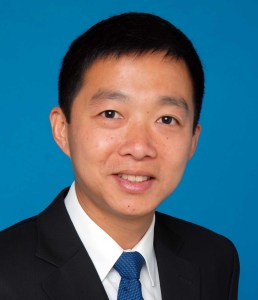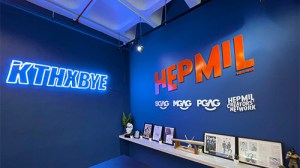The 5G Opportunity in ASEAN: How To Unlock Value For Your Business



Discover what’s driving adoption of 5G and how ASEAN businesses and service providers can maximise the opportunity.

Cheng Kian Khor
It’s a pivotal time for ASEAN’s telecommunications industry with growing momentum behind 5G. Today, 5G is commercially available in several ASEAN countries, including Singapore, Thailand, Philippines, and Malaysia. What’s more, adoption is growing with 5G connections predicted to reach 430 million by 2025 across the broader Asia-Pacific region.
The opportunities for communication service providers (CSPs) and other businesses are huge. The high bandwidth, low latency, and massive scale enabled by 5G unlocks new possibilities in areas such as manufacturing, healthcare, and transportation.
Of course realising these opportunities takes work. This is why the recent conversations around 5G have shifted from network rollouts to monetisation models and user experiences. Here, we shine a light on those conversations and where 5G is headed.
5G adoption driven by business need rather than speed
5G is potentially up to 100 times faster than its predecessor, 4G/LTE. However, speed alone is not enough to drive widespread adoption.
Manoj Prasanna Kumar, Head, Technology, Enterprise 5G & IOT at Singtel, says businesses will adopt 5G for the same reason they adopt most technologies — to solve specific challenges.
“Businesses will not upgrade to 5G just for a faster network. That’s why any discussion with the customer should start with the challenge they are trying to solve,” said Manoj.
It is the resulting applications that will drive the need for 5G. Drones are a great example. They are increasingly popular in areas like facilities management, often used to inspect hard-to-reach areas and perform maintenance. To safely operate drones, the transfer of information between devices and operators must be as close to real-time as possible. This is where the need arises for high-speed, low latency, and reliability of 5G.
MEC extends possibilities for 5G and mission-critical applications
As businesses look to harness the full potential of 5G, they need to optimise other aspects of their infrastructure. For example, those wanting to deploy drones and other mission-critical applications may need to transform their network architecture and adopt multi-access edge computing (MEC).
MEC provides cloud-computing capabilities that allow data to be processed as close as possible to the source. This ultimately reduces latency and speeds up data processing, both of which are important for applications like drones and autonomous vehicles.
“What customers are most concerned about is scaling and securing their applications while knowing that their infrastructure and connectivity will not be an issue,” said Manoj.
“What the market then needs is seamless infrastructure that extends from the customers’ edge to the cloud and can be accessed through any means of connectivity. This will provide a bedrock on which customers can confidently run their mission-critical applications.”
5G monetisation will require service providers to rethink business models
5G is still relatively new and CSPs are forming plans to monetise their 5G investments. Manoj suggests partnerships and revenue sharing will be key.
“5G is not just about a higher order of connectivity. It represents a new global economy. I say this because as customers adopt 5G, they are looking forward to new business models from CSPs like pay-for-use and revenue sharing. They want to ensure that CSPs have skin in the game to solve the business challenges they are trying to solve,” said Manoj.
On a more practical level, CSPs need to modernise their business support systems (BSS) for 5G. A recent survey from Nokia indicated that only 11% of CSPs who responded had sufficient BSS capabilities to support 5G monetisation.
There is a need for CSPs to extend and revamp their BSS and IT stacks to enable rapid launch of new 5G offers and support new charging models. It is also important for BSS to support the growth of solution partnerships and ecosystems to deliver new digital customer experiences.
That’s why Salesforce and Nokia have partnered to provide CSPs with the capabilities they need to launch and monetise 5G services faster. This offering builds on Salesforce’s Communications Cloud with integrated solutions from Nokia for service orchestration and monetisation, leveraging Nokia’s Digital Operations Center and Converged Charging platforms.
“CSPs need to invest in systems that will give them the flexibility to charge customers based on different parameters. At the same time, there is a whole new ecosystem of developers creating apps and pre-integrated solutions CSPs should be tapping into. Through our partnership with Salesforce, we are helping CSPs capture every revenue opportunity from the 5G economy,” said Gustavo Duarte, Global Vice President, Presales and GTM Business Applications, at Nokia CNS.
How 5G drives new use cases
In terms of industry verticals, 5G will drive new use cases and applications, and promising verticals include Industry 4.0. These encompass factory floors, logistics, warehouses, smart city, and public safety use cases. From a horizontal perspective, video analytics, and AR/VR and Metaverse are areas where 5G capabilities are key to driving adoption. For example, on the factory floor, customers are exploring how video analytics can be used to detect faulty products as they emerge from the assembly line.
Singtel’s Manoj also sees many use cases when video cameras become mobile, for example when mounted on automated guided vehicles (AGVs). “A typical AGV has about 8-10 cameras to offer 360 degree views to the pilot or the driver, likewise drones, robots which carry cameras…This is a key use case that may require low latency communications to back-end systems and video recording systems.”
Manoj also sees strong potential in virtual reality and mixed reality use cases, including Metaverse use cases. “The enterprises we are speaking to are exploring how they can use Metaverse in their day to day operations,” said Manoj. As more rich and immersive content requiring low latency and edge computing resources are developed, the demand for 5G and MEC will increase.
In summary, there is a huge potential for 5G across a wide range of use cases in Asia. 5G leaders such as Singtel are taking great strides in making these leading edge 5G applications a reality. At the same time, Salesforce and Nokia are enabling CSPs to deliver new customer experiences, and offering new charging and monetisation models that are integral to unlocking the potential for 5G.




















